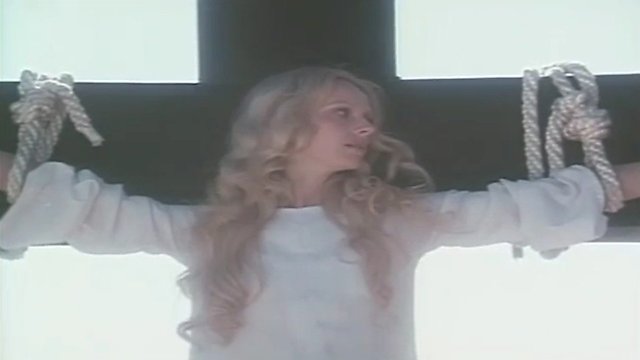
The Second Coming of Suzanne
Where to Watch The Second Coming of Suzanne

The Second Coming of Suzanne is a 1974 drama film directed by Michael Barry and starring Sondra Locke, Paul Sand, and Jared Martin. The movie is an evocative exploration of art, religion, and self-identity with a distinct countercultural flair reflecting the experimental cinema of the 70s.
Suzanne (Sondra Locke) is an enigmatic young woman who becomes the captivating muse for two artistic brothers, Aaron (Paul Sand) and Clavius (Jared Martin). Their relationships form the crux of the film, encapsulating themes of artistic expression, inspiration, and personal obsession.
Aaron, the first brother, is an esteemed sculptor whose modernist works often push the expectations of the art world. He becomes fascinated by Suzanne and attempts to capture her essence in his art. Sondra Locke's performance here is both captivating and haunting, making Suzanne a transcendent figure. The blend of seduction, distance, vulnerability, and power Locke brings to the role adds layers of complexity to her character.
Her relationship with Aaron delves into the power dynamics between artist and muse. Suzanne refuses to be confined to his vision of her, seeking recognition for her own thoughts and experience beyond his artistic rendition. Meanwhile, Aaron struggles with the objectification inherent in his role; the tension this creates forms a central conflict in the narrative.
Clavius, portrayed by Jared Martin, is a film director who decides to document Suzanne’s life stringently. Prompted by his brother's fascination, he embarks on a controversial project to recreate, through Suzanne, the life and sacrifice of Saint Joan of Arc for a modern audience. Martin’s performance beautifully depicts Clavius's single-minded obsession with authenticity as he attempts to craft a piece of living art, regardless of the human cost.
This film within a film narrative style further enhances the philosophical undertones of The Second Coming of Suzanne, asking questions about truth, belief, sacrifice and the blurred line between fiction and reality. It vividly explores the historical parallels between Suzanne, a modern yet misunderstood woman, and Saint Joan, seen by many as the archetypical misunderstood heroine. As Clavius's vision evolves, Suzanne becomes more entangled in this double identity, ultimately questioning her own agency within these overlapping narratives.
With characters that are at once contradictory and complementing, the film delves into an intricate narrative about identity exploration. Suzanne’s journey of navigating through the world defined by men challenges the viewer to question their understanding of art, religion, and gender dynamics. Subverting traditional roles and relationships of power, her journey of self-realization and transformation becomes a central narrative subplot, making the movie a commentary on gender and power asymmetry.
The movie does not shy away from exploring sexual politics and thus successfully paints a picture of a woman reclaiming her agency from the male gaze. While the narrative oscillates between each character's perspective, it always returns to Suzanne's experience. Consequently, Suzanne is not merely a subject of male creation, but a woman with her own voice and experiences, subverting the traditional dynamic between male artists and their female muses.
One of the film’s standout aspects is its display of surrealism. Director Michael Barry uses surrealism both visually and thematically to drive the narrative. Eccentric and often dreamlike sequences coupled with sharp shots of reality create a mesmerizing contrast. These bold visual choices enhance the film’s exploration of art and reality.
On a technical front, the film features trademark 70s cinema elements, including an atmospheric soundtrack that enhances its storytelling appeal. The cinematography is experimental, showcasing dynamic framing and sharp color palettes. The use of symbolism and metaphors intensify the film's depth, shedding light on the underlying themes of art, religion, and women's liberation.
In conclusion, The Second Coming of Suzanne serves as a compelling exploration of art and female agency. It challenges the conventional artist-muse relationship, creating an atmosphere that is as captivating and unique as its titular character, Suzanne. With its layered narrative, dynamic performances, and intricate themes, it is a gem from the 70s worthy of rediscovery by modern audiences. This movie offers much more than just a cinematic experience; it presents itself as a valuable commentary on art, religion, and gender dynamics.
The Second Coming of Suzanne is a Drama movie released in 1974. It has a runtime of 85 min. Critics and viewers have rated it mostly poor reviews, with an IMDb score of 4.7..
How to Watch The Second Coming of Suzanne
Where can I stream The Second Coming of Suzanne movie online? The Second Coming of Suzanne is available to watch and stream, buy on demand, download at FuboTV, Apple TV Channels, Amazon, Amazon. Some platforms allow you to rent The Second Coming of Suzanne for a limited time or purchase the movie for downloading.
